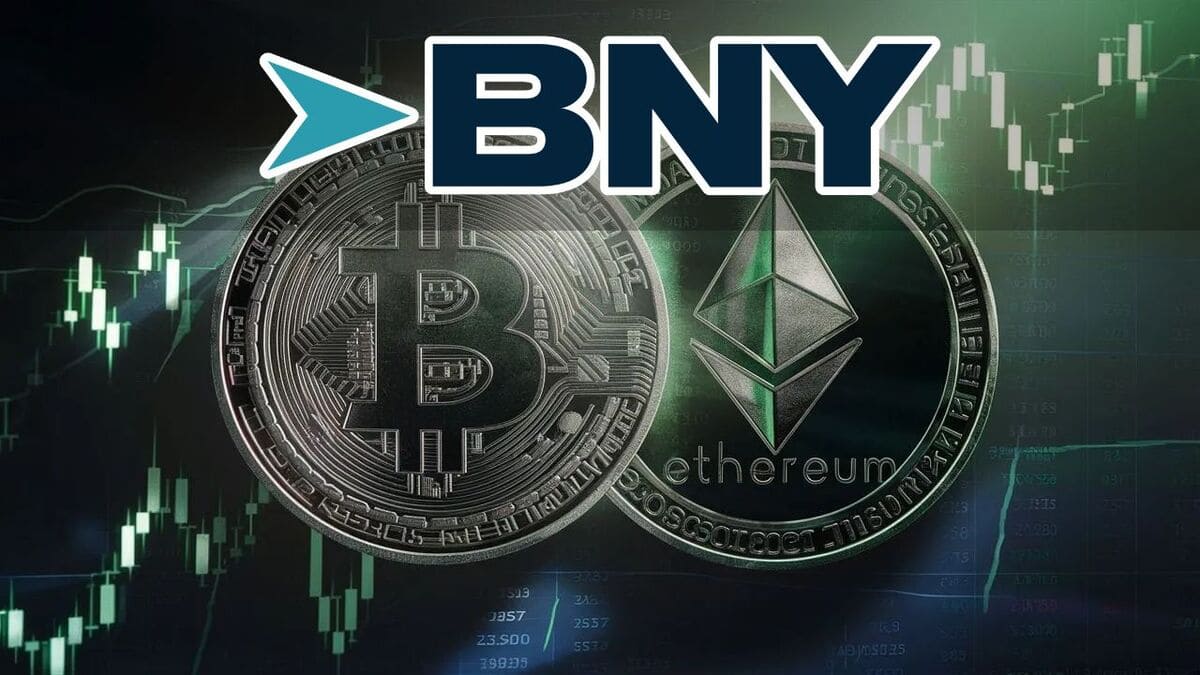Fidelity’s Tokenized U.S. Treasuries Fund on Ethereum: What Financial Professionals Need to Know

Fidelity Investments has made a decisive move into the onchain fixed-income space with the launch of its Fidelity Digital Interest Token (FDIT), a tokenized share class of its flagship Treasury fund, now live on Ethereum. This development is sending ripples through both traditional and digital finance circles, as financial professionals weigh the implications for institutional blockchain investing and the future of tokenized US government bonds.
Fidelity’s Entry: Setting a New Standard for Tokenized Treasuries
The FDIT fund stands out in a rapidly expanding field. Backed by short-term U. S. Treasury bills and cash equivalents, it is designed to offer stability and liquidity while leveraging blockchain’s transparency. The fund’s assets have already surpassed $200 million in value as of early September 2025, signaling strong institutional demand. The annual management fee is set at 0.20%, and oversight is provided by The Bank of New York Mellon, an established custodian in global finance.
This launch comes at a time when Ethereum itself is trading at $4,483.66, reflecting robust confidence in public blockchain infrastructure as a foundation for regulated financial products. Fidelity’s move places it in direct competition with other asset management giants like BlackRock and Franklin Templeton, who are also experimenting with tokenized fixed-income offerings.
Key Features: Why FDIT Matters for Institutional Investors
- Blockchain-Native Access: FDIT tokens are issued directly on Ethereum, enabling 24/7 trading and near-instant settlement without reliance on legacy intermediaries.
- Transparency: Every transaction is recorded immutably on-chain, allowing investors to independently verify holdings and flows.
- Efficiency: Smart contracts automate processes like transfer, redemption, and compliance checks, potentially reducing operational costs and errors.
- Institutional-Grade Oversight: With Bank of New York Mellon as custodian and Fidelity’s compliance infrastructure, investors benefit from familiar safeguards even as they enter a new technological paradigm.
The scale of adoption is hard to ignore, especially when compared to earlier experiments in tokenized treasuries that struggled to gain traction beyond crypto-native circles. The arrival of Fidelity’s FDIT signals that tokenized US government bonds are no longer niche instruments but are entering mainstream portfolio construction discussions among large institutions.
The Competitive Landscape: Tokenization Heats Up
This move by Fidelity comes amid growing momentum for real-world asset (RWA) tokenization across capital markets. According to recent projections, the market for tokenized treasuries could exceed $2 trillion by 2030, a figure that underscores the urgency for financial professionals to understand these instruments today.
The competitive landscape now includes multiple heavyweights vying for market share with similar products built on public blockchains like Ethereum. Each provider differentiates through asset composition, fee structure, custody arrangements, and user experience design. For instance, while BlackRock’s offering targets similar assets, Fidelity’s blend of low fees (0.20% annually) with deep regulatory expertise may appeal more broadly to cautious institutions seeking first-mover advantage without sacrificing compliance or security.
Ethereum (ETH) Price Prediction 2026-2031
Professional forecast incorporating Fidelity’s tokenized treasury fund launch and ongoing institutional adoption trends
| Year | Minimum Price (Bearish) | Average Price (Base Case) | Maximum Price (Bullish) | Estimated YoY % Change (Avg) | Market Scenario Insights |
|---|---|---|---|---|---|
| 2026 | $3,900 | $5,100 | $7,200 | +14% | Sustained institutional adoption; tokenized RWA growth; regulatory clarity emerging |
| 2027 | $4,300 | $5,850 | $8,900 | +15% | Further institutional inflows; DeFi and RWA use cases expanding; regulatory tailwinds |
| 2028 | $4,800 | $6,750 | $10,500 | +15% | Mainstream adoption of tokenized assets; ETH staking maturity; increased competition |
| 2029 | $5,500 | $7,800 | $12,800 | +16% | Global tokenized asset market >$1T; Ethereum Layer 2 scaling; possible regulatory tightening |
| 2030 | $6,300 | $9,000 | $15,000 | +15% | ETH as backbone for financial infrastructure; interoperability gains; tech upgrades (Danksharding, etc.) |
| 2031 | $7,000 | $10,250 | $17,800 | +14% | Mature RWA ecosystem; ETH as a dominant settlement layer; potential macroeconomic volatility |
Price Prediction Summary
Ethereum is poised for steady growth through 2031, benefiting from major institutional adoption, especially with products like Fidelity’s tokenized treasury fund. The increasing integration of real-world assets (RWA) on-chain, ongoing technological upgrades, and growing regulatory clarity are likely to drive both price appreciation and broader ecosystem adoption. However, competition, market cycles, and regulatory risks remain key variables influencing price trajectories.
Key Factors Affecting Ethereum Price
- Institutional adoption of Ethereum as a settlement and tokenization platform (e.g., Fidelity, BlackRock)
- Growth of tokenized real-world assets (RWAs) and on-chain finance
- Ethereum network upgrades (scalability, cost, security)
- Regulatory developments in the US and globally
- Market competition from alternative L1/L2 blockchains
- Macro-economic environment (interest rates, global liquidity)
- Mainstream integration of blockchain-based financial products
Disclaimer: Cryptocurrency price predictions are speculative and based on current market analysis.
Actual prices may vary significantly due to market volatility, regulatory changes, and other factors.
Always do your own research before making investment decisions.
The rise of these funds also raises questions about secondary market liquidity, will institutional investors trade these tokens peer-to-peer or rely on new forms of digital marketplaces? And how will regulators respond as volumes swell? Early signs suggest that providers like Fidelity are working closely with authorities to ensure full adherence to existing legal frameworks while pushing innovation forward.
Navigating Regulatory and Market Considerations
No discussion would be complete without addressing regulatory compliance, a top concern for any institution considering allocation to digital securities. While blockchain technology offers enhanced transparency and efficiency, evolving legal standards around custody, investor protections, reporting requirements, and cross-border flows remain front-of-mind issues.
If you’re weighing whether Fidelity’s FDIT belongs in your portfolio strategy or client offering set, it pays to stay informed about both technological advances and shifting policy landscapes. For deeper analysis on how this product is changing institutional access models or reshaping fixed-income investing paradigms globally, see our resource guides such as How Fidelity’s Tokenized U. S. Treasuries Fund on Ethereum Changes Institutional Access.
For financial professionals, the launch of Fidelity’s tokenized U. S. Treasuries fund is more than a headline; it’s a signal that onchain fixed-income assets are entering a new phase of legitimacy and scale. As the FDIT continues to attract capital, the practical implications for portfolio management, liquidity provision, and compliance will become even more pronounced.

Practical Impacts: Portfolio Construction and Liquidity
Integrating Fidelity tokenized treasuries into institutional portfolios offers tangible benefits. The ability to trade shares of a Treasury fund 24/7 on Ethereum means that asset managers can respond to global macro events in real time, rather than waiting for traditional market hours. This flexibility is especially valuable in periods of heightened volatility or when managing cross-border mandates.
Furthermore, the transparency inherent in blockchain-based funds allows for real-time reconciliation and independent verification of fund holdings, an operational leap from legacy systems reliant on batch updates and manual processes. As secondary markets for these tokens mature, we may see new forms of liquidity emerge, including decentralized exchanges and automated market makers tailored to fixed-income instruments.
Key Considerations Before Allocating to Tokenized US Treasuries
-

Regulatory Compliance: Ensure that allocations to Fidelity Digital Interest Token (FDIT) and similar tokenized Treasury products adhere to current regulations and stay updated on evolving legal frameworks for digital assets.
-

Custody and Security: The Bank of New York Mellon serves as custodian for FDIT, providing institutional-grade oversight. Review custody arrangements and understand how digital assets are secured on the Ethereum blockchain.
-

Liquidity and Settlement: Tokenization on Ethereum enables 24/7 trading and near-instant settlement, but professionals should assess actual market liquidity and counterparty risks before allocating.
-

Management Fees: Fidelity charges an annual management fee of 0.20% for FDIT. Compare this with fees from other traditional and tokenized Treasury products to ensure cost-effectiveness.
-

Transparency and Reporting: Blockchain’s immutable ledger enhances transparency, but confirm that transaction records and reporting standards meet your institution’s compliance and audit requirements.
-

Competitive Landscape: Evaluate how Fidelity’s offering compares to other established products from BlackRock and Franklin Templeton, both of which have launched tokenized Treasury funds on blockchain networks.
-

Market Growth and Adoption: With over $200 million in assets under management for FDIT and projections for the tokenized Treasury market to surpass $2 trillion by 2030, staying informed on adoption trends is vital for strategic allocation.
Risks and Due Diligence: What Professionals Should Watch
Despite the promise, risks remain. Smart contract vulnerabilities, evolving regulatory interpretations, and questions around interoperability with existing custody solutions all require thorough due diligence. Fidelity’s use of The Bank of New York Mellon as custodian provides some reassurance, yet professionals must still assess counterparty risk at both the protocol and service provider levels.
Another consideration is how these products fit within broader compliance frameworks. For instance, know-your-customer (KYC) requirements may be enforced differently depending on whether tokens are traded peer-to-peer or via regulated venues. Staying current with policy guidance is essential as regulators adapt rules for digital securities.
Looking Forward: Tokenization’s Role in Institutional Finance
The arrival of FDIT at this scale suggests that tokenized US government bonds are poised to become core components of institutional strategies, not just speculative experiments. The competitive landscape is evolving rapidly as more asset managers enter the fray with their own Ethereum treasury fund offerings.
As market infrastructure matures, expect new analytics tools, custody integrations, and trading protocols designed specifically for onchain fixed-income assets. For financial professionals seeking diversification and operational agility, products like FDIT open doors to innovative strategies previously unavailable through legacy rails.
“Tokenization isn’t just about efficiency, it’s about reimagining access and transparency for all participants in global finance. ”
The next wave will likely see deeper integration between traditional finance (TradFi) institutions and blockchain-native protocols as both sides seek to capture efficiencies without compromising trust or compliance standards. Monitoring these developments will be crucial for anyone advising clients or managing institutional capital.
For a comprehensive breakdown of how Fidelity’s offering is shaping institutional onchain fixed-income trends, and what it means for your allocation strategy, explore our guide How Fidelity’s Tokenized U. S. Treasuries Fund on Ethereum Is Shaping Institutional On-Chain Fixed Income.







